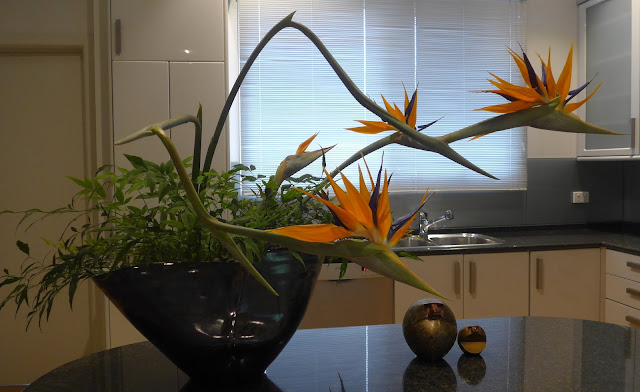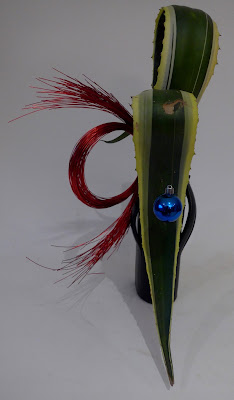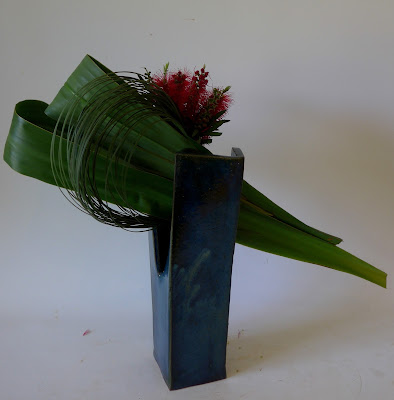Hello all,
Finding time to write this post has been difficult at
this crazy time of year but I wanted the opportunity to wish you all a very happy and safe festive
season, in whichever way you're celebrating it.
As for us, our plans were right on track to have nearly fifty
people for a buffet lunch featuring a lamb on the spit. However, the total fire ban, which was announced for tomorrow has ruined our plans and we are
scrambling around for a plan 'b'. I'm sure we will manage and that no one will
go home hungry but this extreme heat will make things much harder. So, I'm
writing this post after midnight hoping to publish before Christmas Day.
Some time ago I was about to throw out this unremarkable
object, a rack from an old dishwasher, when Lucy came up with an idea for its
use. She suggested we each take turns making an arrangement using the rack as
unconventional material. So I put it to the girls, some of whom managed to make
one.
 |
| Margaret Wilson |
 |
| Janette Fonda |
 |
| Helen Novic |
 |
| Bredenia Raquel |
 |
| Vicky Kalokathis |
 |
| Emily Karanikolopoulos |
At our last Sogetsu workshop, which was conducted by Lara Telford, we were to do an arrangement along the style of one of the Iemotos. I chose Sofu Teshigahara because I particularly like the way he used 'mass' in his arrangements.
I leave you with this arrangement that looks like it's about to take flight. The flowers of this strelitzia reginae grow as tall as two metres and the heads are so large and heavy that they bend down creating these interesting shapes.
Emily































































